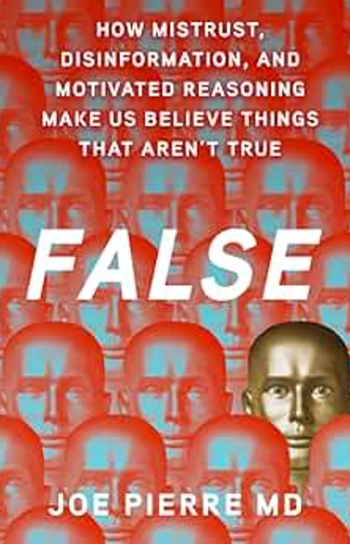
- Vol 38, Issue 2
- Volume 02
Ink Stained for Life
What was life like in the 1950s Bronx for a budding preeminent psychiatrist?
BOOK REVIEW
by Lloyd Sederer, MD; Austin Macauley Publishers, 2020
230 pages • $27.95 (hardcover)
Reviewed by Steven S. Sharfstein, MD
Dr Sharfstein was one of many preeminent psychiatrists who reached out to review this book. The number of friends that Dr Sederer has, the number of psychiatrists who have worked for him or with him and hold him in such high regard, is truly impressive.
—Howard Forman, MD, Book Review Editor
One of the few benefits of pandemic-driven social isolation and quarantine is time to read. Really read. Newspapers and magazines as well as fiction and nonfiction. It was my special enjoyment to pick up the memoir of Lloyd Sederer, MD,
The book consists of 14 chapters that are stories or vignettes from Lloyd’s New York City (the Bronx, in particular) experiences in the 1950s and 1960s. Each story is paired with a companion essay on the meaning of the experience or memory, and the context at that time and place and in light of today’s social issues. His insights as a psychiatrist are shared throughout, and these are the key observations that lead me to hope that practicing psychiatrists will avail themselves of this easy-to-read volume.
Lloyd’s childhood and adolescence were remarkably benign or normal. No major trauma or losses to overcome. It was full of love and family. He did not have to overcome poverty or discrimination. There was struggle, however: the struggle of a first-generation immigrant family and small business owner; the struggle of a rebellious, odd child who fashioned his identity against the backdrop of constraints of his family’s expectations and the larger community. His is a story about how a child with relentless curiosity forged an identity.
First, Lloyd was a good (mostly) Jewish boy. The title of the book references his weekends at aged 8 years, when he went with his dad to the small stationery store the family owned and would put together the New York Times, Daily News, and the Herald Tribune for customers who would stream in that Sunday. The ink from the papers would stain his hands, face, and clothes, and the experience rubbed off on him indelibly. He often wished he were somewhere else and became determined to be someone else. In this, his family—particularly his dad—supported his journey.
Second, Lloyd was a very funny boy—with a very Jewish sense of humor (ie, like Neil Simon or Mel Brooks). When it came time for him to learn an instrument, he picked the accordion. The accordion! Complicated, with bellows (“that could fan Hades”), he played it in school orchestra. His Bar Mitzvah was not a typical rite of passage. Although he went to Hebrew school and learned his Torah portion, he would have preferred shooting hoops in the playground. Mesmerized by firecrackers in the neighborhood, he bought some from older boys and resold them (can you be a firecracker pusher?) to his fellow Hebrew school students just before Hebrew school, making a tidy little profit. Busted by the Rabbi (which proves to be a hilarious scene in the book), he worries less that his Bar Mitzvah would not happen and more about his dad’s reaction. His dad said nothing, implying approval. As he opines, “After all, wasn’t I following my dad’s Semitic, merchant bloodline, creating a (small) business and making a profit?”
Third,
He learned life’s important lessons. Show up, work hard, and then, most importantly, give back. The book is a thank-you note to his parents, teachers, and friends. It is full of gratitude.
I could personally relate to this memoir, having grown up in a family of small business owners (on Long Island, not the Bronx). Although the ability to relate added pleasure to the experience of reading the book, it was not the source of most of the pleasure.
Psychiatrists, and our patients in particular, will benefit by seeing how one of our most effective leaders developed. Fortunately, this development into a wise leader is documented with great humor.
Dr Sharfstein is a psychiatrist, former president of the American Psychiatric Association, and the 2007 recipient of the Human Rights Award from the American Psychiatric Association.
This article was originally posted ahead of print on November 12, 2020, and has since been updated. -Ed
Articles in this issue
almost 5 years ago
The Cardiovascular Consequences of Drug Usealmost 5 years ago
Positivism and Heart Health: Issues for Psychiatristsalmost 5 years ago
Understanding the QTcalmost 5 years ago
A Psychiatrist Weaving Conceptual and Empirical Workalmost 5 years ago
Spike in Health Care Cyber Attacksalmost 5 years ago
Pain and Smoking: Is There an Association?almost 5 years ago
The Onealmost 5 years ago
Neuropsychiatric Symptoms of Multiple Sclerosisalmost 5 years ago
Underused Medication May Be Best Bet for Comorbid AUD and DepressionNewsletter
Receive trusted psychiatric news, expert analysis, and clinical insights — subscribe today to support your practice and your patients.

















